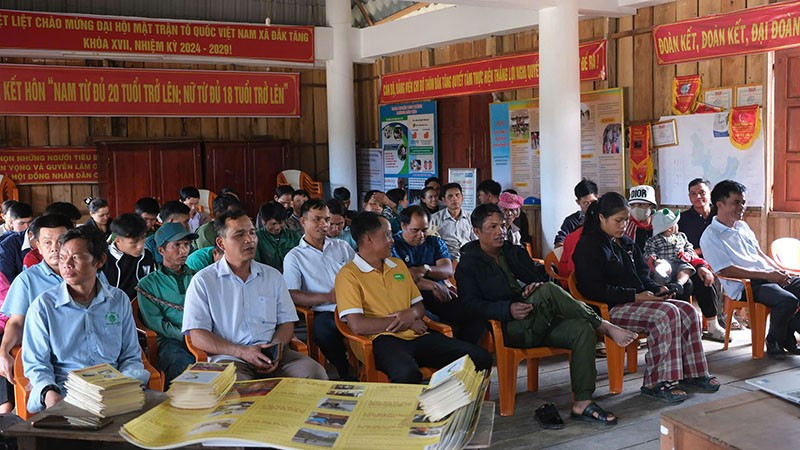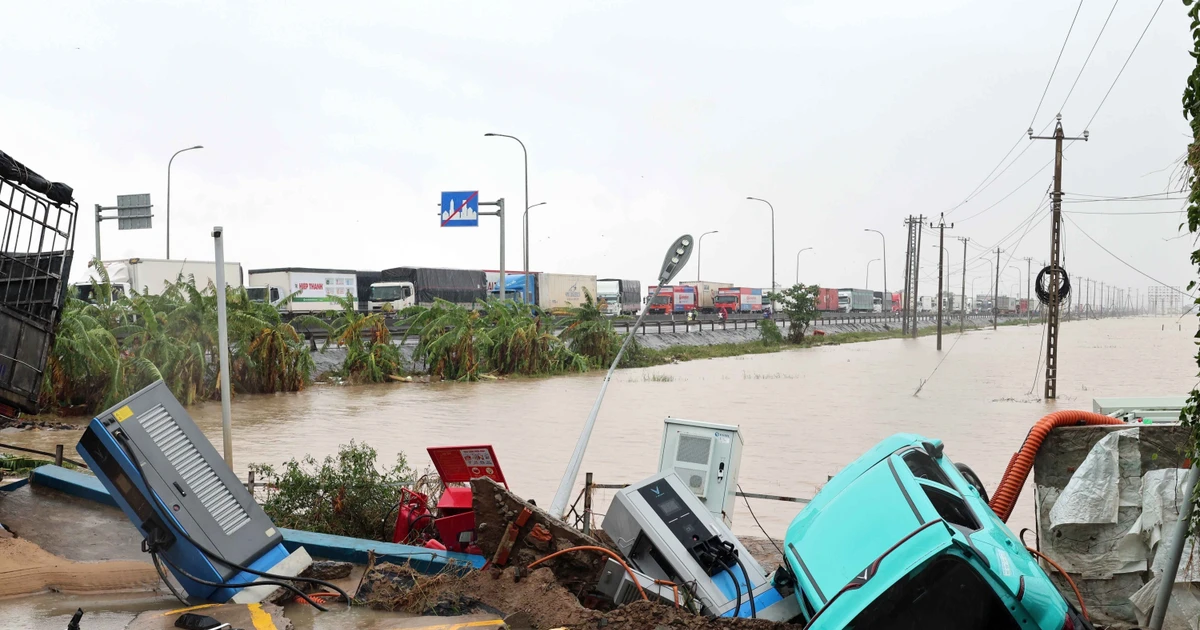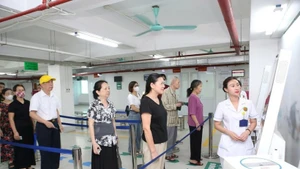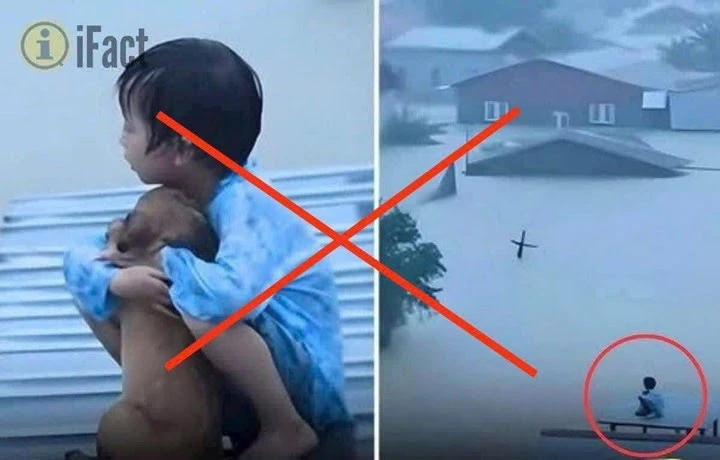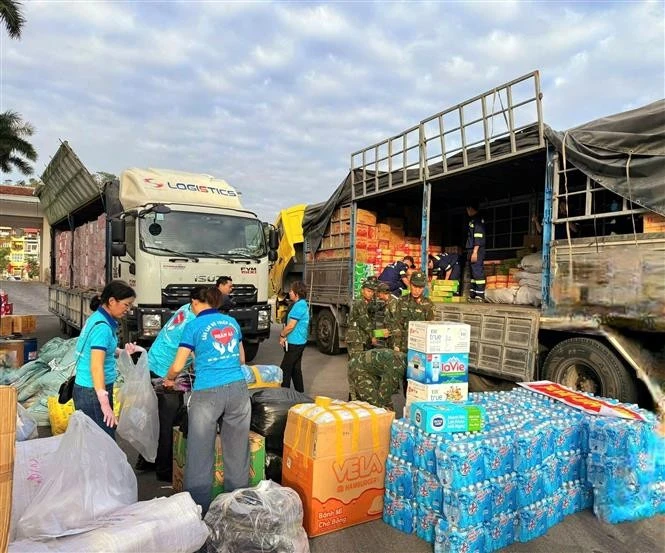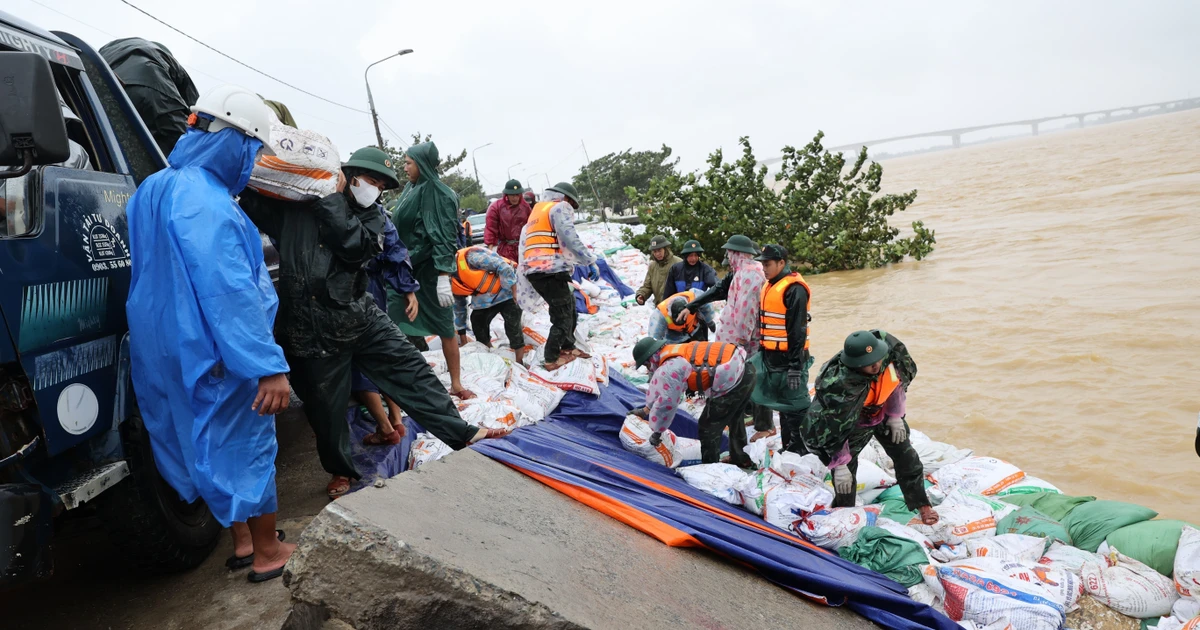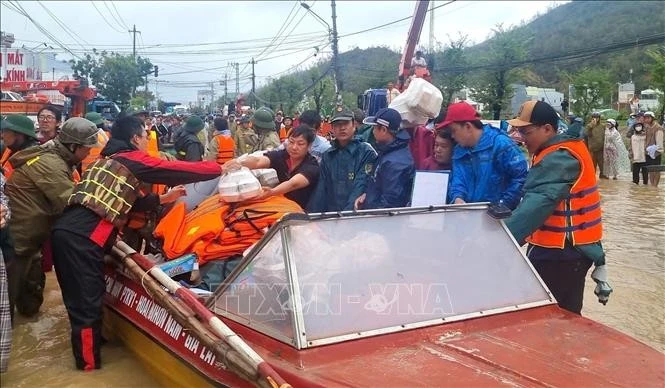Residents in the earthquake-prone area of Kon Plong District (Kon Tum Province) attend a training session on earthquake response.
Therefore, most countries worldwide prioritise measures to mitigate damage, with the top priority being constructing buildings capable of withstanding earthquakes and equipping citizens with knowledge and skills to respond effectively.
Although Vietnam is not located on the “Ring of Fire”, where a high concentration of earthquakes and volcanoes occur, it is still considered a country with significant earthquake hazards.
Vietnam has recorded several strong earthquakes with magnitudes ranging from 6.7 to 6.8 in localities in the Northwest region, such as Dien Bien Province (1935) and Tuan Giao Town in Dien Bien (1983).
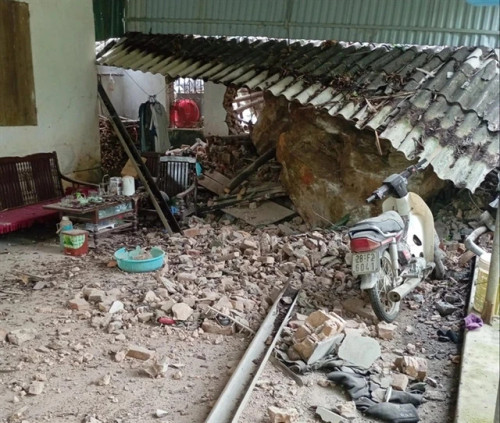 |
| Rocks from the mountain rolled down onto a house in Cao Duong Commune, Luong Son District in Hoa Binh province following an earthquake on March 25 in My Duc District, Hanoi. (Photo: tuoitre.vn) |
Between 1910 and 2020 alone, the national seismic station network recorded over 300 earthquakes with magnitudes of 4.0 or higher in this area.
According to geological studies, there are currently 46 major seismic fault systems distributed across Vietnam's territory, continental shelf, and the East Sea/South China Sea. These are potential sources of earthquakes in Vietnam which could occur at any time. Additionally, activities related to hydroelectric dams nationwide may also trigger induced earthquakes.
A notable concern is that high-rise buildings in Vietnam have not yet been equipped with seismic monitoring devices. Only some critical infrastructure and hydroelectric dams have begun implementing such systems.
In major cities like Hanoi and Ho Chi Minh City, tremors from earthquakes are only recorded through residents' perceptions rather than specific measurements by authorities.
Installation of monitoring devices in buildings would allow for detection when vibrations exceed safe design thresholds. The system would provide early warnings for residents to move to safe locations.
More importantly, data collected would serve as a basis for functional authorities to assess the impact of an earthquake and decide whether inspections, reinforcements, or evacuations are necessary. In a long term, such systems would contribute to updating seismic hazard maps and adjusting construction standards.
Therefore, earthquake experts have proposed installing vibration monitoring devices in high-rise buildings in risk-prone areas.
One of the most severe consequences of earthquakes is building collapse, even in areas far from the epicentre. This was evidenced by the collapse of a high-rise building in Bangkok (Thailand) as a result of tremors from a major earthquake in Myanmar combined with weak soil characteristics in that area.
In Vietnam, old prefabricated concrete panel apartment buildings constructed during the 1970s-1980s pose high risks as they were not designed according to seismic standards. Additionally, modern high-rise buildings need monitoring and inspection following recent tremor-inducing earthquakes.
There are still significant limitations in public awareness on earthquake. People's reactions to the effects of the recent earthquake in Myanmar, especially from those living in high-rise apartments, revealed that many of them lack appropriate response skills.
Some hastily left their apartments using elevators for evacuation or gathered in large numbers in building lobbies or at the base of towers. Others even failed to recognise tremors altogether, mistaking them for dizziness or fatigue.
Experts suggest that while people are accustomed to responding to storms and floods, they lack basic knowledge about safety during earthquakes.
When they are inside a sturdy building during an earthquake, individuals do not have to evacuate but should prioritise protecting themselves from falling objects or debris. If they are outdoors, it is crucial to stay away from tall buildings to avoid risks from collapsing structures or falling materials.
The impacts of recent earthquakes once again highlight our shortcomings and limitations in awareness and response capabilities regarding earthquakes.
Earthquakes cannot be prevented but their damage can be controlled if functional authorities act promptly and citizens are adequately equipped with knowledge for effective response.
